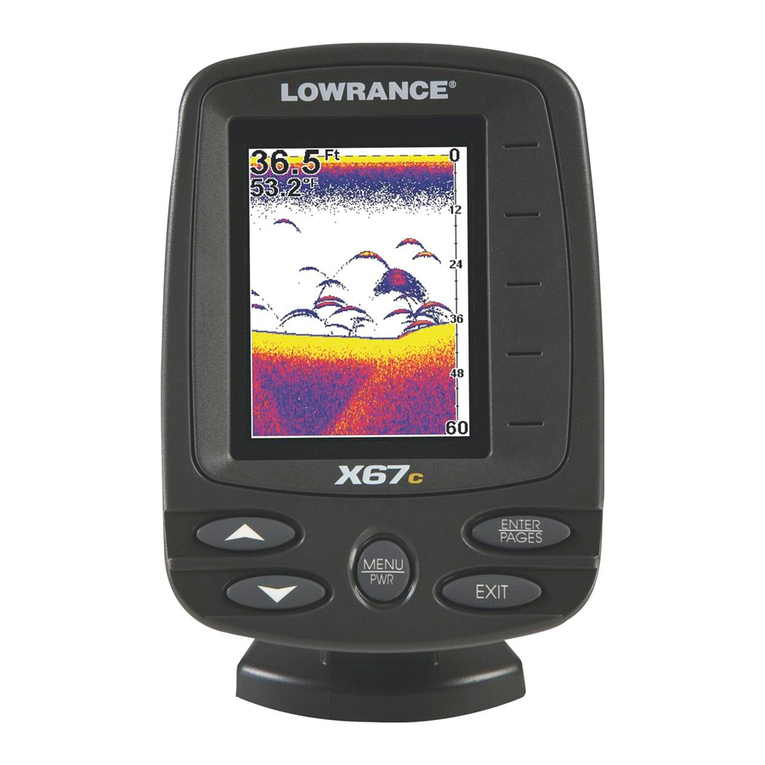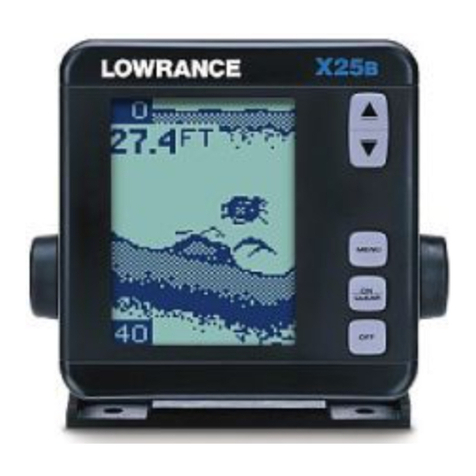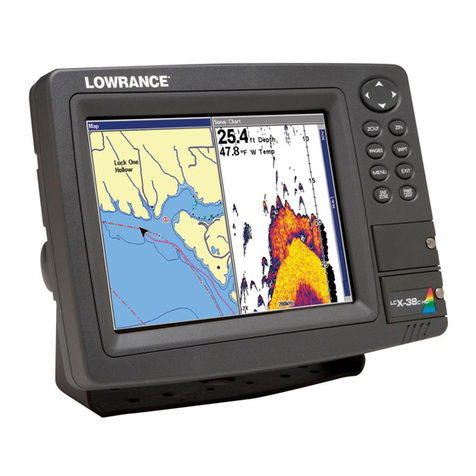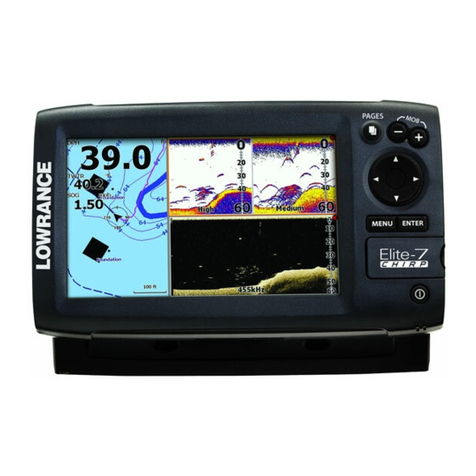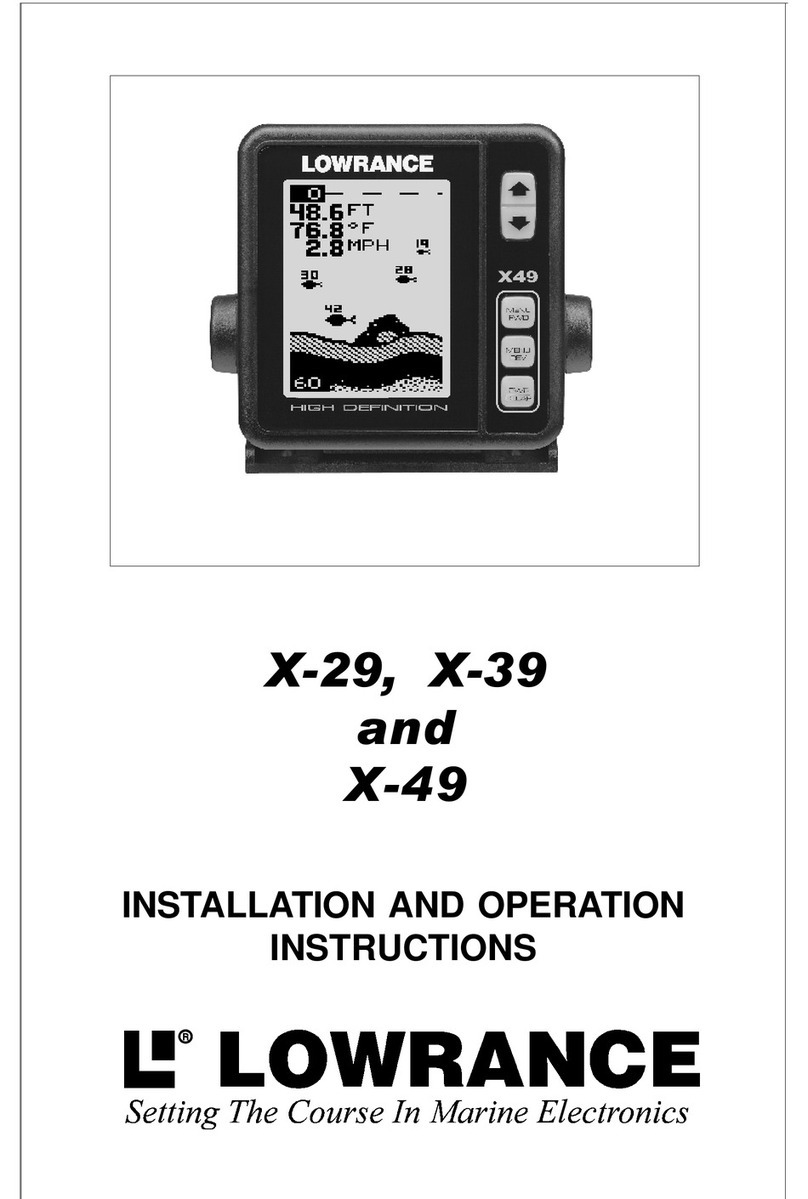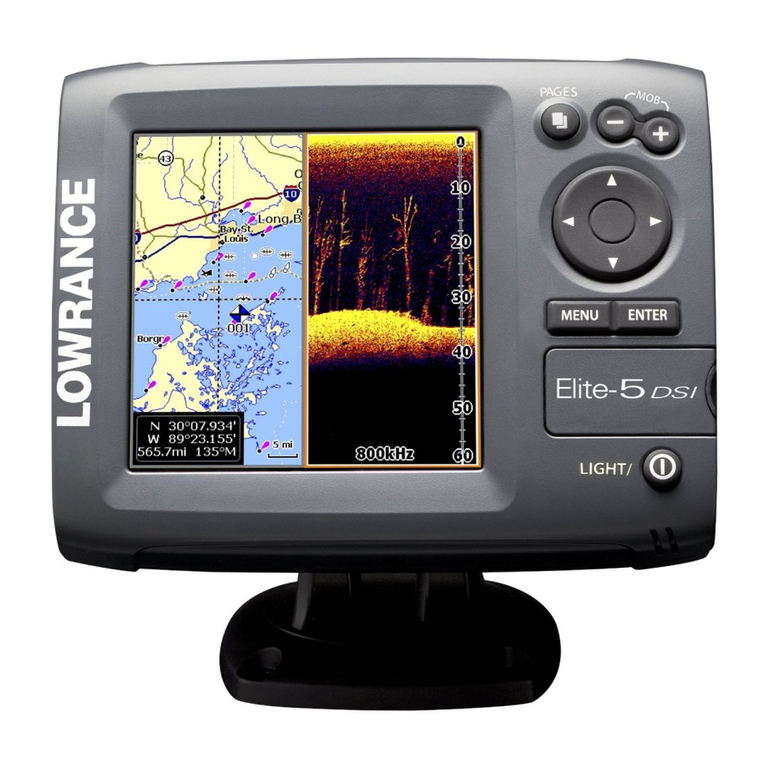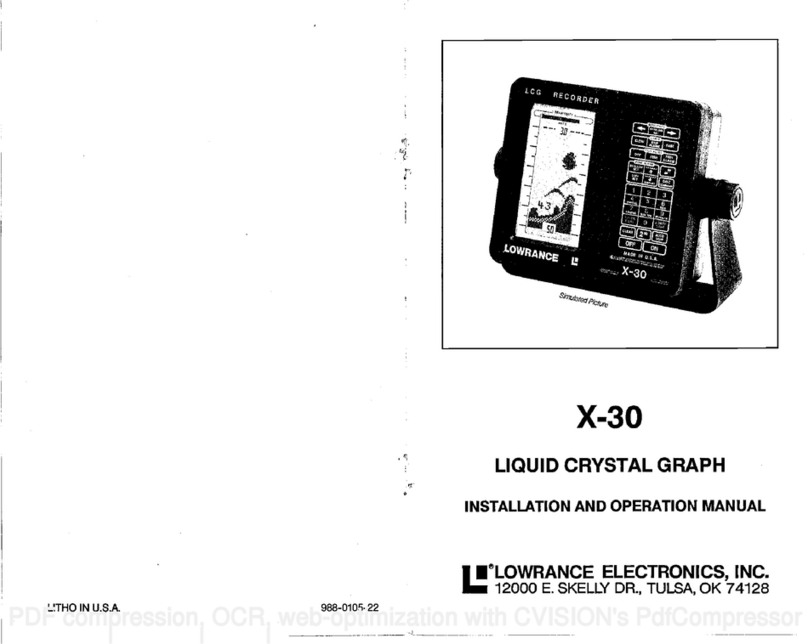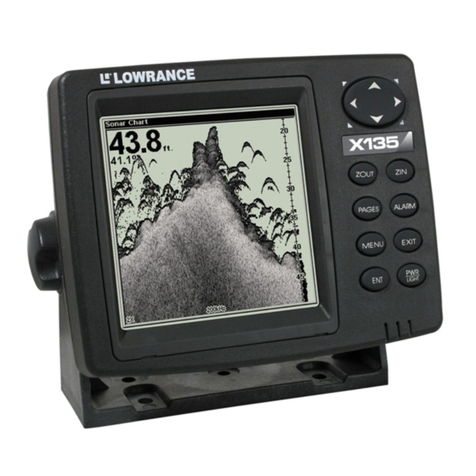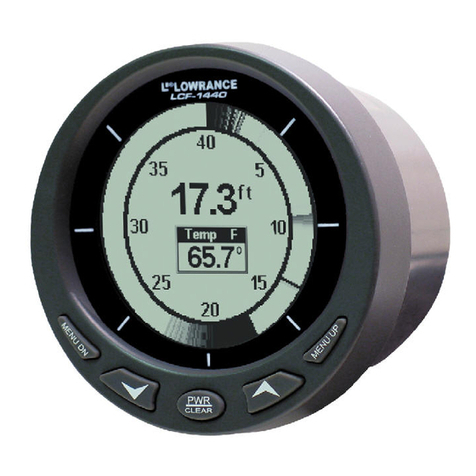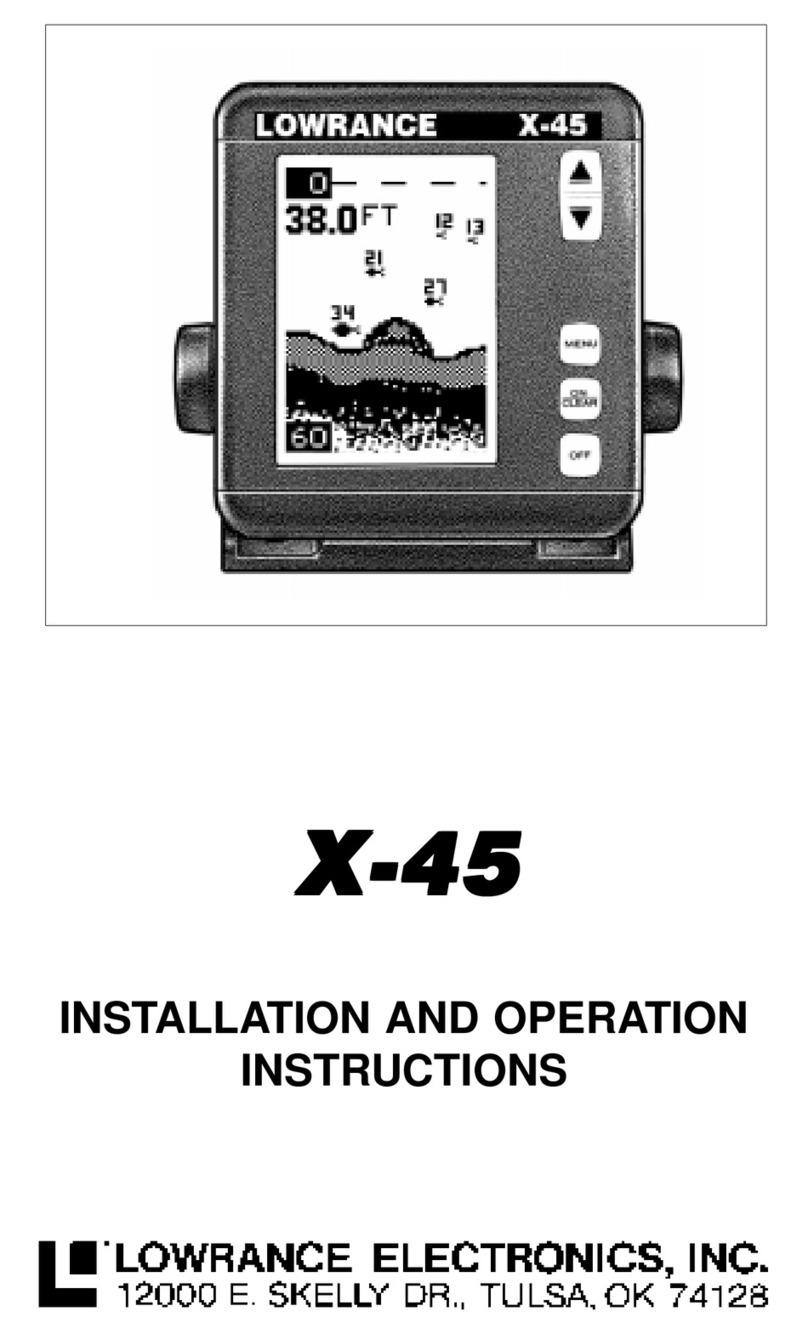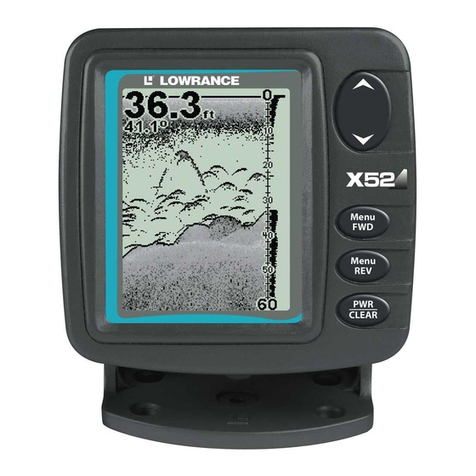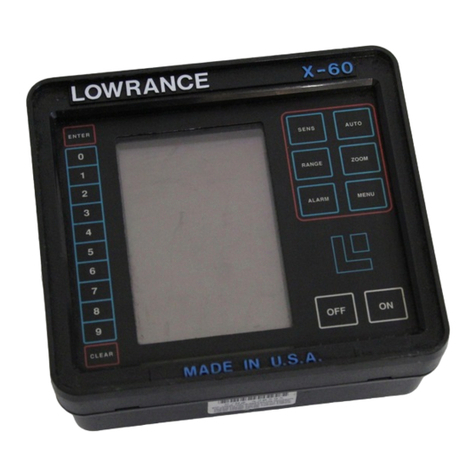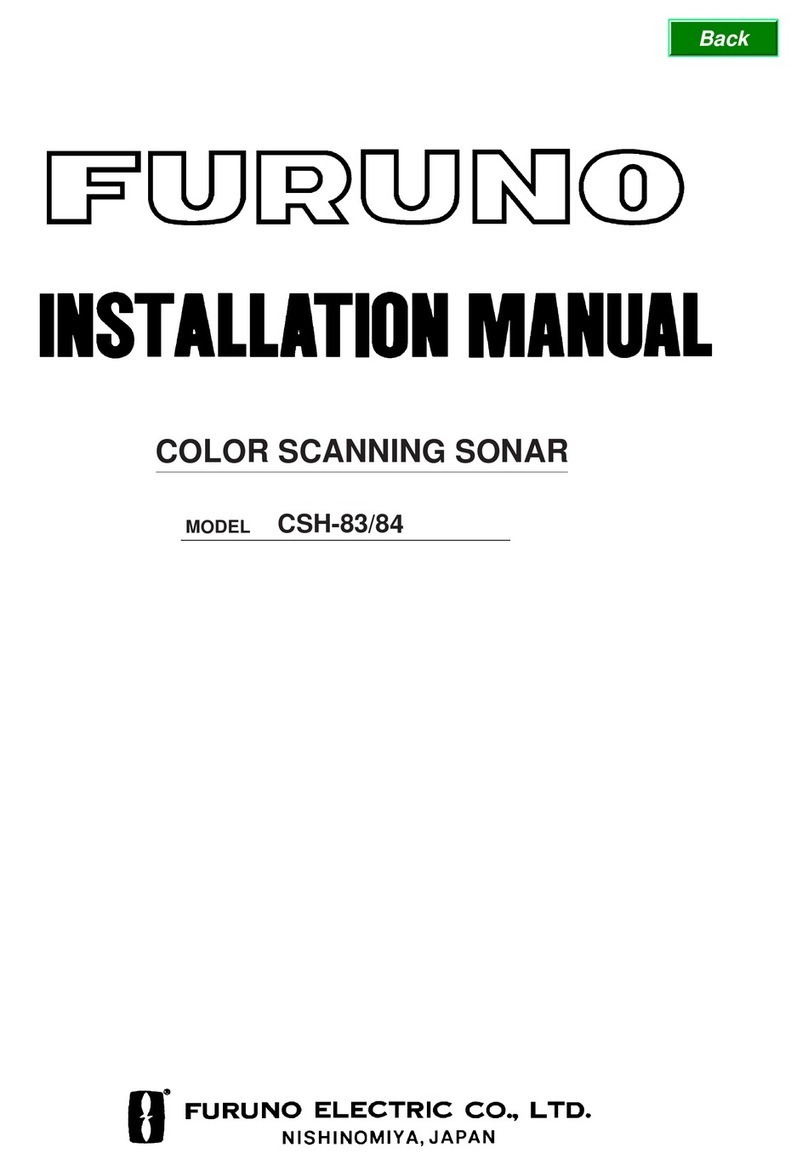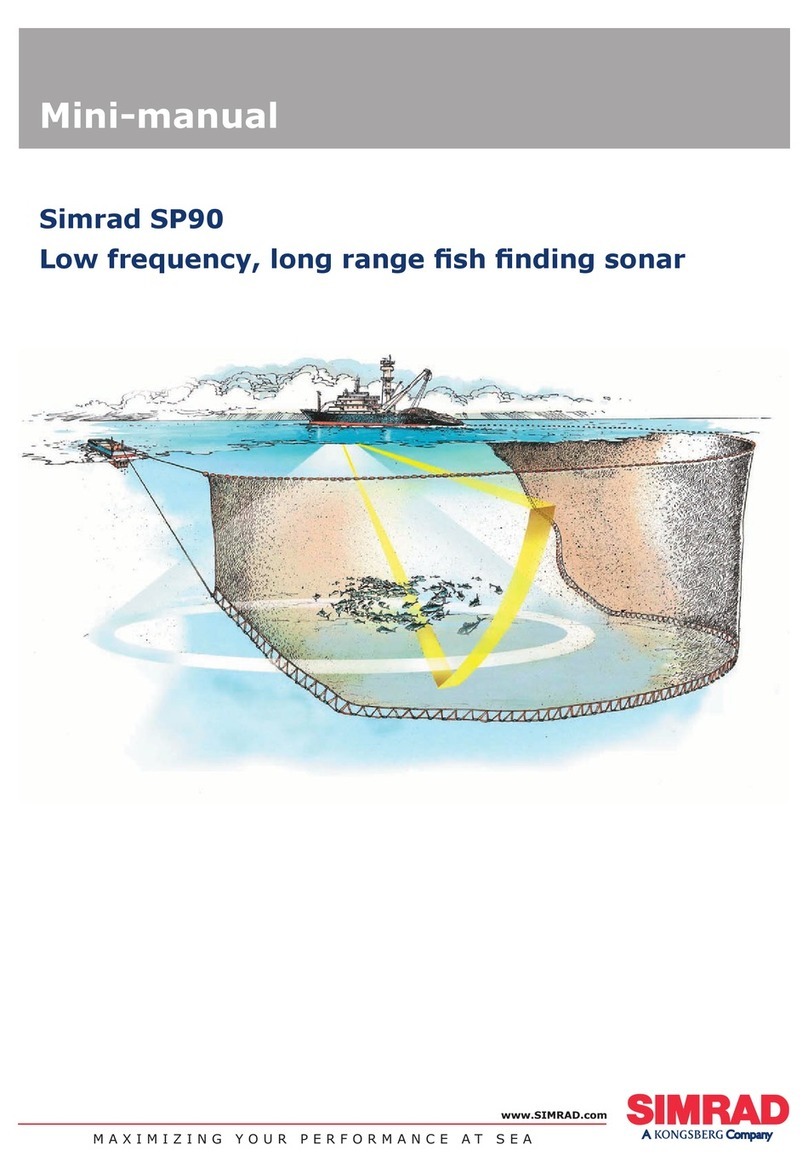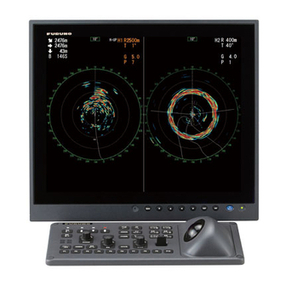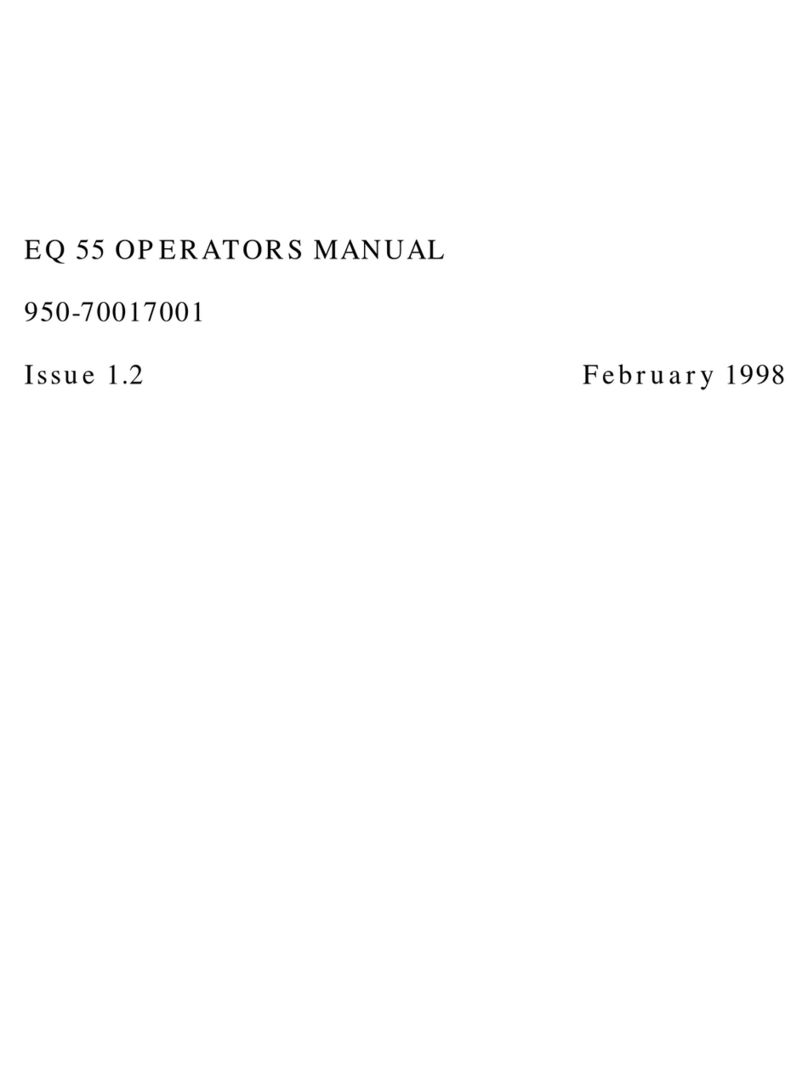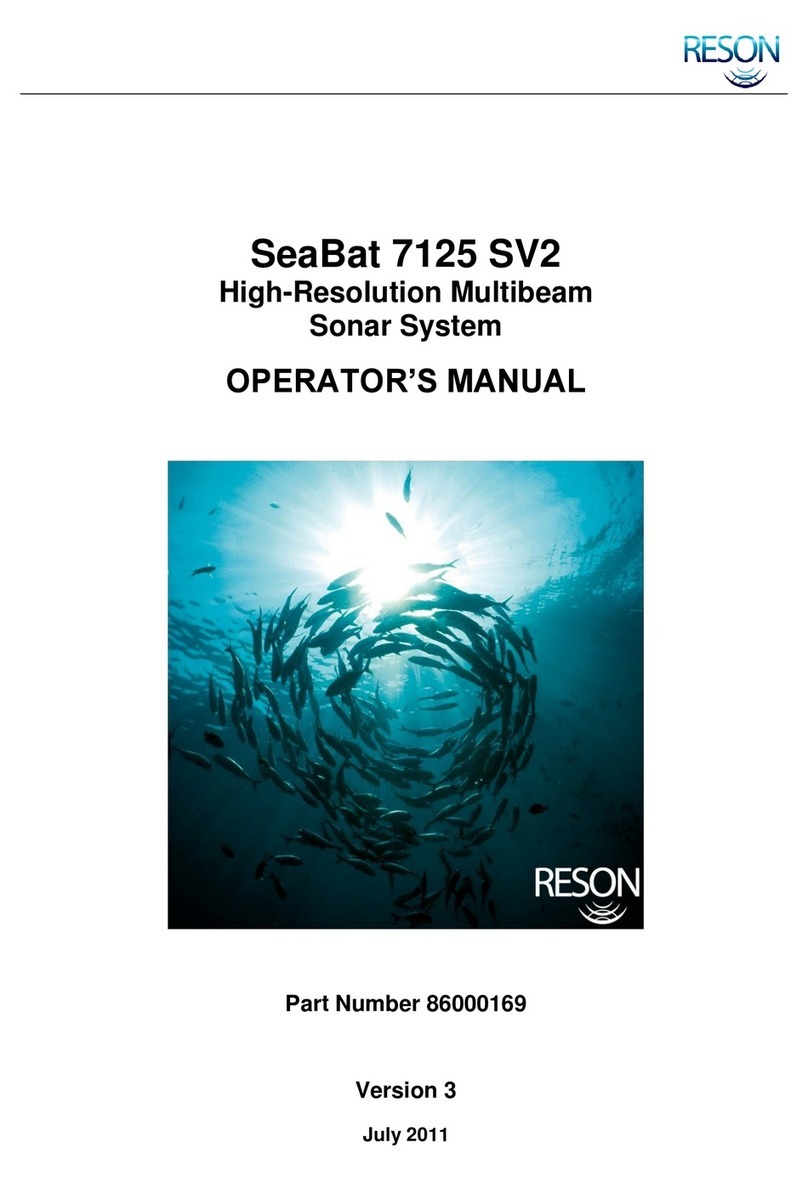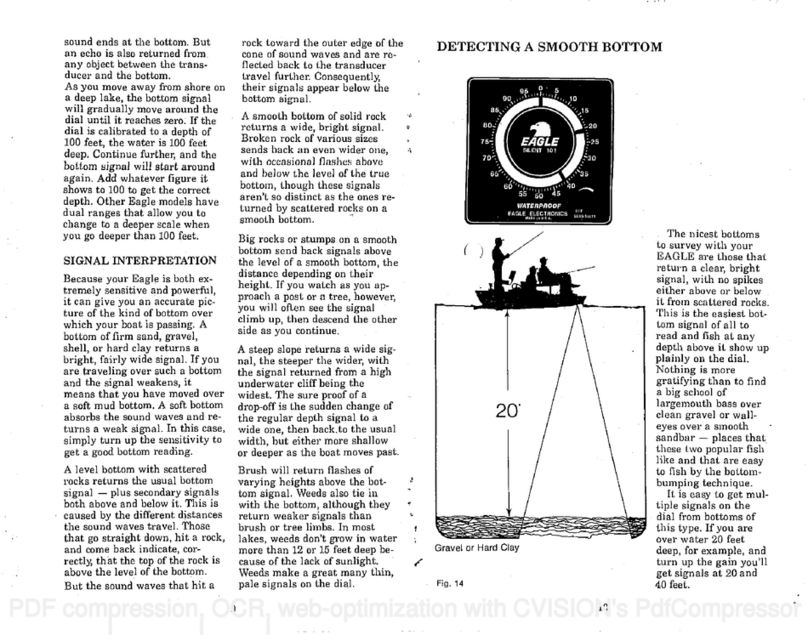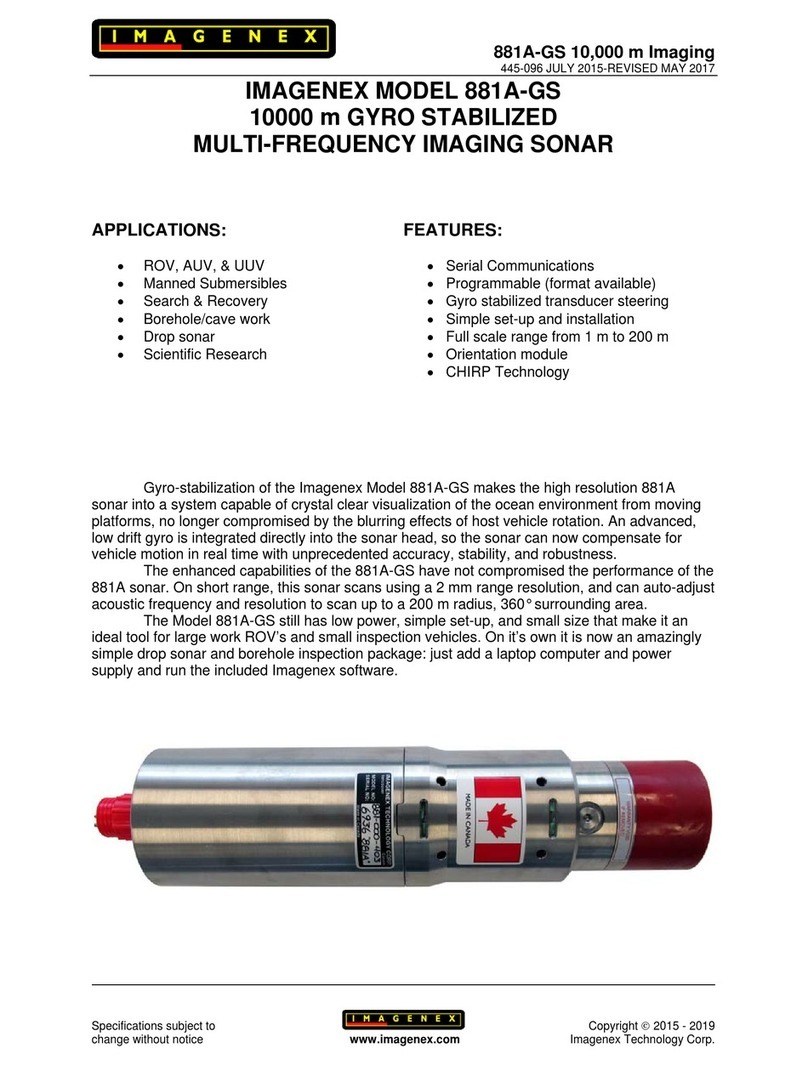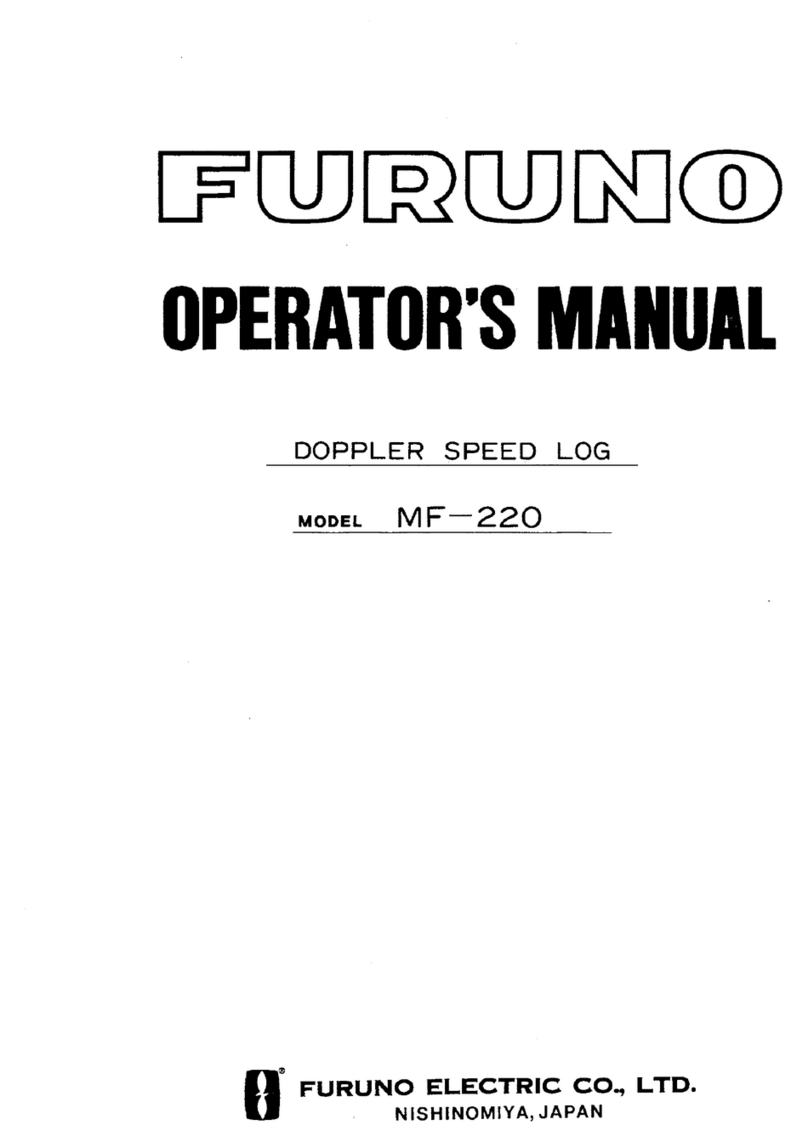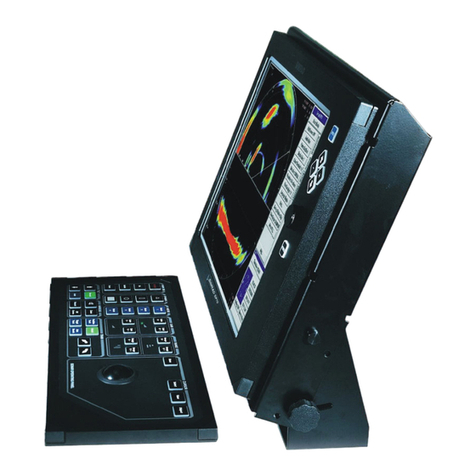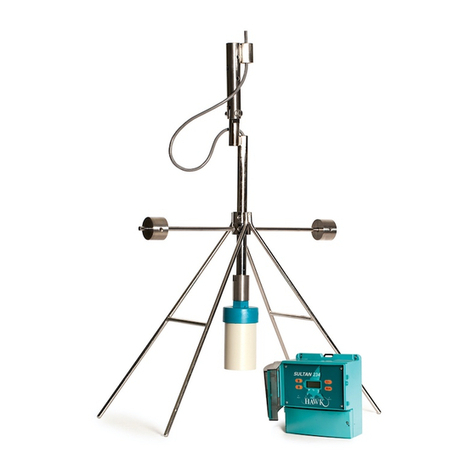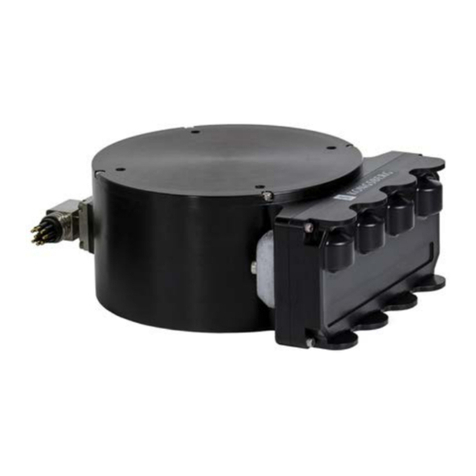
keyboard
the initial pulse length
desired and then press the PULSE
key. Forexample,toset theinitial
transmitpulselengthto 100micro-
seconds,press 1 -0-0- PULSE.
This will override the micro-com-
puter'sselection and set theinitial
transmitterpulse lengthto 100
micro-seconds.P
=100 will be
printed atthe bottom ofthepaper
tosignify that
theentry has been
confirmed. (Note:When aninitial
transmit pulse length is set, this
lengthwill befixedfor all depth
settings until changed.)
To returncontrol backtothe
micro-computer,press0- PULSE
and the micro-computerwillselect
the initial pulse length.
ALTERNATE
TRANSMIT AND
PRINT
When usingtheX-16 in deep
water, or ifyouwishtosimply
conservepaper,itmaybedesir-
ableto slow thepaper speed even
more thanthe automaticsystem
allows. However, when doing so,
you mayget over print" orvery
dark, heavy printing over anarea
that is difficultto read. Much detail
canalso belostdue tothis.
Afeaturethatisavailableon the
X-16isthe Alternate Transmitand
Printfunctionwhich, whenacti-
vated,causes the stylus toprint
every other revolutioninstead of
everyrevolution.Thisaccom-
plishesfourthings:
1. Sincethestylus only prints
every other revolution,the
recorded informationdoesn'thave
the"overprint"problem, therefore
good records are attainable at
slowerpaperspeeds. Also, the
scale numbers are spread out
more, makingthem more legible.
2. Reducesthepossibility of 24
"wrap-around".Thisisthe undesir-
ableoccurrenceofthesecond or
third bottom echoprinted on the
paper atthetop ormiddle ofthe
page. Many times this can inter-
ferewithfish or other
targets
that
youwishtosee.
3. Reducesthe reverberation
effect.Thishappens mainly on
lowerfrequency units, but it can
happen onhigherfrequency mod-
els. Reverberationis heavy,
scatterednoisemarks caused by
thetransmitted signal becoming
trapped between thesurface and
thebottom, usually scattered in
heavy plankton layers orbaitfish
schools. Thiscausesa great many
lines tobe printed onthe page. By
enabling the Transmitand Print
function, thetransmitter istrig-
gered only halfas many timesas
normal, puffing less energy into
thewater (same amount oftrans-
millerpower,just not asoften)
which reduces theamountof
noiseseen.
4. Divides thepaperspeed by
two. Asignificant amount ofpaper
canbe saved by usingtheAlter-
nate Transmitand Print feature.
To turnthisfeature on, simply
press the 2nd key, then press the
"4" key. Thepaper speed will
immediatelyslowdown, signifying
thatthefunction isenabled.
To turntheAlternate Transmit
and Printfeature off, simply press
the2nd key and then pressthe
"7" key. Thepaper speed will
immediately speed up, signifying
thatthefunction has been turned
off.
PAPERSAVE
Although theAlternate Transmit
and Printfunction will slowthe
paperspeed, thePaper Save
function is an even more powerful
Thus, you would usea20
degreetransducer when looking
for fishor strubture,toeasily
find
drop-offs or reefs,and to seefish
that are around you. . . not just
below you. However,
the 20
degree transducer won't
penetrate
to greater depths as well asthe 8
degreetransducer, norwill itshow
asharp drop-off aswell. In a
deep-waterenvironment (100 feet
ordeeper) or whereyou're
looking
atsharp drop-offs,the narrow
cone angle cansometimesbe
moredesirable because itcan
more accurately detecttheloca-
tionofthe drop-offwithout
displaying thefish. In deep water,
with thesound energy being con-
centrated in asmaller area, the8
degree transducer canreachto
greater depths.
Both the8degreeandthe20
degreetransducers give accurate
bottom readings,even though the
bottom signal is muchwideron
the 20degree model becauseyou
are seeing more ofthebottom.
Remember,the shallowedge of
the signal shows youthetrue
depth. Therest ofthe signaltells
youwhether
youare over rocks,
mud, dropoffs,etc.
Thanks tothe LSB-200Atrans-
ducer switch
box, you can have
thebestofboth worlds. Byinstall-
ingthe LSB-200A near the
operator,both a20degree and an
8 degree cone angle transducer
maybe mounted onaboat and
connected tothe switch box.A
cablefromtheswitch boxisthen
connected totheX-16.Now
eithertransducer maybeused as
conditions dictate. Use the20
degreetransducer when in shal-
lowto medium depthsand then
switch tothe8degreetransducer 5
whenin deep water orwhen you
need justnavigation information.
Saltwater boats need to have
thetransducer
painted with athin
coat of anti-foulant paintto prevent
organisms fromgrowing. If un-
checked, barnacles and other
marine growth will cause a
decrease inthetransducer's sen-
sitivity. Do not useametal based
anti-foulant paintas itwill de-
crease thetransducers sensitivity
also. There are special paints on
the market specifically designed
fortransducers and are carried
by
most marine dealers.
BASIC OPERATION
On-Off and Sensitivity Control —
Rotate theSensitivity knob
clockwise toturntheunit on. The
Sensitivity knobworks much like
the volume control on a radio, that
is,weaker signals will bedetected
with highersettings
ofthe knob.
When cruising, oratothertimes
when
justsimple bottom contour
information isdesired, the Sen-
sitivitysetting canbe low. Indeep
water orover soft, muddy bottoms,
(which produce weak echoes),the
setting will havetobe higher.
When highSensitivity settings
are used, asecond bottom echo
will appear.This is normal and is
caused bythe returning signal
reflecting offthesurface ofthe
water,making asecond tripto the
bottom and back.
Ifdetailed information about
brush piles, individual fish,orthe
thermocline is desired, theSen-
sitivityknobshouldberotated to
approximatelythe ¾point.Refer
tothe illustrations onpage6to
see whateffect theSensitivity
control setting has onthe recorded
information.
PDF compression, OCR, web-optimization with CVISION's PdfCompressor
